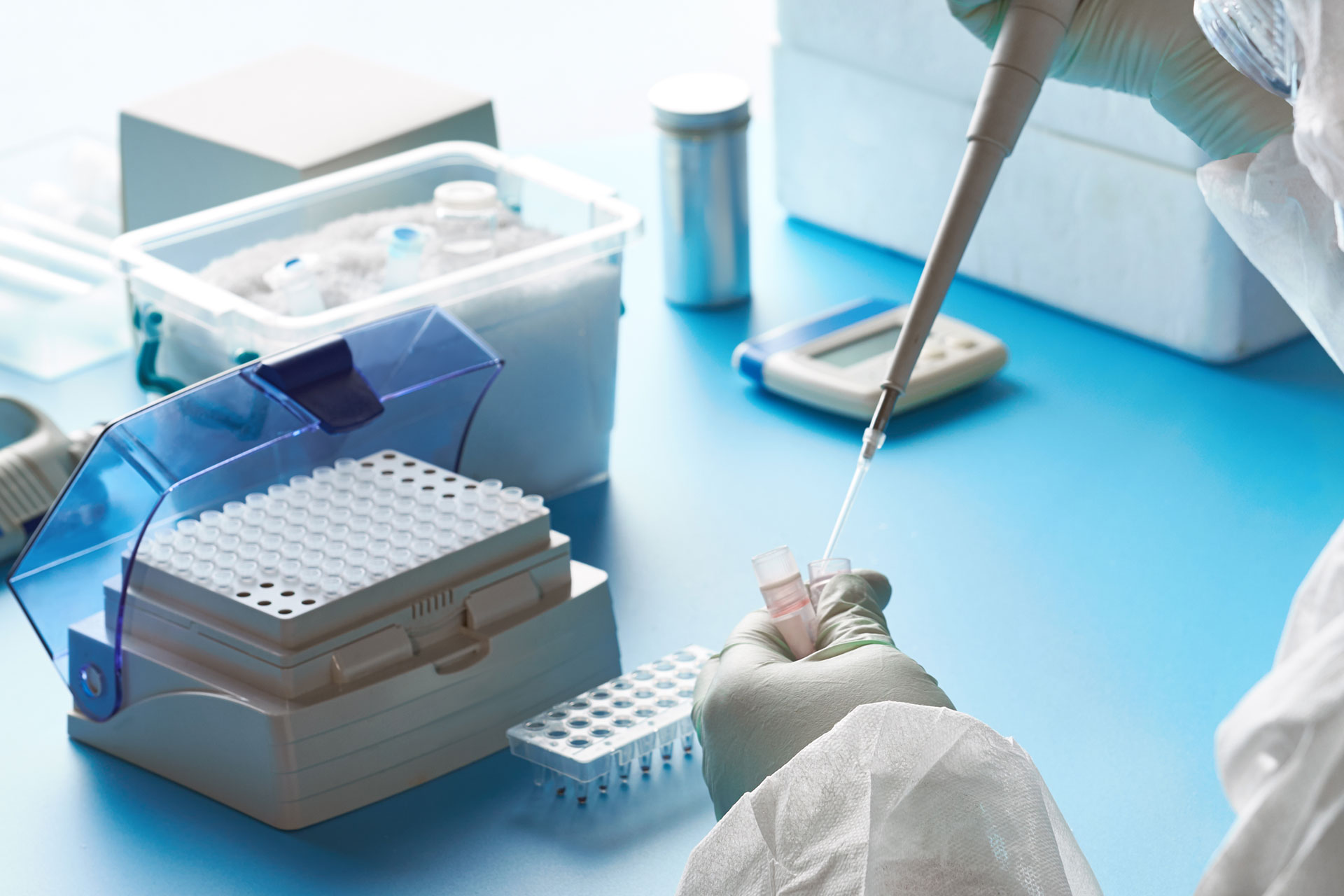Miller School Researchers Pivot to COVID-19
Years of fundamental discovery research provide a head start against the coronavirus
By Josh Baxt

COVID-19 has forced billions worldwide to shelter in place, and people want to return to normal life as soon as possible. But before that can happen, safeguards must be put in place, including accurate diagnostics to determine who has the virus and effective vaccines to ensure the disease never comes back.
To meet these urgent medical needs, many Miller School of Medicine researchers have pivoted from ongoing inquiries into cancer, HIV and other conditions to working on COVID-19.
Their skills, however, are transferrable. These scientists have spent years investigating immunity and other aspects of human biology. They have unique insights into how to detect — and, ultimately fight — this novel coronavirus.
Understanding COVID-19
Savita Pahwa, M.D., professor and director of the Miami Center for AIDS Research (CFAR), studies human immune responses in different scenarios. Immunity generally declines as people age, making them more vulnerable to the flu and other pathogens. This vulnerability can be especially pronounced for people with HIV, even if they are being successfully treated with highly active anti-retroviral therapies (HAART).
“Our goal is to understand the cellular mechanisms that produce influenza antibodies,” Dr. Pahwa said. “How is it deranged in people who don’t respond well, and what happens to people if they have HIV? We have found that persistent inflammation can dampen immunity.”
Dr. Pahwa’s lab is focused on T folicular helper (Tfh) cells, which identify infections and tell B cells to make antibodies in response. The lab has worked on both influenza and malaria vaccines, providing a useful platform to answer important questions about COVID-19. For example, why is the virus disproportionately virulent in older patients? Why do some people react violently to generate a “cytokine storm?” At present, no one really knows the answers.
“How does age impact COVID-19 response in terms of inflammation and antibody production, and which cells are involved?” Dr. Pahwa asked. “If they are deranged, what kinds of drug interventions can correct that?”
However, before they can answer this and other questions, Dr. Pahwa and colleagues need a large repository of patient COVID-19 samples to study. Facilitating this sample collection has been an important part of her job, lately, and it’s not easy. The CFAR team has developed extensive biosafety rules to guide the collection, transport, laboratory processing, storing and ultimate study of these samples.
The bottom line is keeping clinicians, laboratory workers and everyone else safe. But there’s more to it. They also need control samples from healthy patients.
“We are hoping to expand our target population to study people who are asymptomatic and look at their B and T cells,” Dr. Pahwa said. “We want to see how well they’ve responded compared to patients who are really sick in the hospital. Teasing out the harmful from the beneficial components of the immune response in COVID-19 will be important.”
Fast Diagnostics
Another HIV researcher, Mario Stevenson, Ph.D., professor and CFAR co-director, is applying his knowledge and experience to better detect the coronavirus. Dr. Stevenson’s lab investigates how HIV infections persist, despite HAART. One of his main projects is developing a diagnostic that detects drug resistance in HIV patients who live in areas with few medical resources.
“Some of the technology we developed for that test could be exploited to detect this novel coronavirus,” Dr. Stevenson said.
The lab is adapting their efforts to create a simple COVID-19 test that could be widely deployed. Like other tests, Dr. Stevenson’s detects the viral genome. However, he’s trying to avoid much of the complicated sample preparation associated with other diagnostics, such as converting viral RNA to DNA so PCR machines can analyze it. Ultimately, he hopes to create a test that will produce results from unprocessed samples.
“It’s safer, because you’re just going from the swab into a single tube, and then that single tube goes into a simple PCR machine,” Dr. Stevenson said. “This approach would be operator-friendly, wouldn’t need extensive training and should be amenable to population-level screening in resource-limited environments.”
The assay is nearing completion, and Dr. Stevenson is working with Dr. Pahwa to find patient samples to validate it.
Sylvia Daunert, Ph.D., Pharm.D., M.S., professor and chair of the Department of Biochemistry and Molecular Biology, is also working on a fast, simple COVID-19 diagnostic. In this case, clinicians would take a saliva sample, combine it with water and reagents, incubate the mixture for a short period and apply it to test strip.
Like other scientists, Dr. Daunert has redirected previous work in response to the current pandemic. Her lab has been working on Zika since its initial onset several years ago. The COVID-19 and Zika outbreaks share some similarities — brand new viruses with no tests. However, though the Daunert lab has focused on Zika, it always embraced the larger picture.
“We realized, we weren’t just working on Zika,” Dr. Daunert said. “We had to think about the future, with climate change, and how that would impact South Florida. We knew other infectious agents would be coming our way, and because we developed a testing platform for Zika, we were ready to adapt it to COVID-19.”
The COVID-19 test strips the lab is developing respond much like pregnancy tests: A positive result produces two lines; a negative only one.
“It’s easy to visualize, and you don’t need expensive instrumentation,” Dr. Daunert said. “That’s why this type of platform is amenable for point-of-care locations, such as emergency rooms, doctor’s offices or community health centers.”
Cancer and COVID-19
Elizabeth Franzmann, M.D., is an otolaryngologist who is studying ways to detect oropharyngeal cancers early, when they are most treatable. Her work is being developed into a point-of-care test by Vigilant Biosciences.
The oral cancer test has to be simple, inexpensive, noninvasive and effective — ideal traits for a COVID-19 diagnostic. The non-invasive part is particularly appealing.
“Most COVID testing uses a special Q-tip that has to go way into the back of the nose,” Dr. Franzmann said. “It’s uncomfortable for patients because you have to twist it around, deep in the nose. People don’t like that, and it also exposes health care workers to the virus.”
Dr. Franzmann is collaborating with others to adapt the oral cancer test for COVID-19. Their approach would be much easier on patients — simply swishing salt water in their mouths for a few seconds and spitting in a cup.
In addition, rather than detecting viral RNA, the device is designed to detect an early antibody response, which could make it a more reliable diagnostic.
“We’ve tested it in patients, and a few controls, so it’s early phase,” Dr. Franzmann said. “So far, the results have been hopeful, but it needs optimization before we can do further testing with patients.”
Developing a Vaccine
Many public health officials have expressed concern that, even after the current outbreak, COVID-19 can come back. Vaccines are the best way to ensure that doesn’t happen.
Glen Barber, Ph.D., professor and chair of the Department of Cell Biology, has spent more than 20 years studying vesicular stomatitis virus (VSV). While VSV is mostly harmless to people, it has been a valuable platform to study immunity and develop therapies.
The Barber lab has used VSV to target tumors. Because cancer cells are broken, they often lose some of their innate antiviral protections. Dr. Barber is leveraging this weakness, infecting tumor cells with modified VSV particles to help kill them. Meanwhile, normal, healthy cells can simply shrug the virus off. Cancer therapies based on Dr. Barber’s VSV platform are currently in clinical trials.
The lab has also been working on VSV-based vaccines to treat hepatitis C, Zika and other viruses and is embracing a similar strategy against COVID-19.
“We’ve taken the spike in the envelope protein of COVID and SARS and basically put it onto VSV,” Dr. Barber said. “If we use that to inoculate people, then we can generate neutralizing antibodies, which hopefully will be sufficient to protect them if they get exposed to the real virus.”
Natasa Strbo, M.D., D.Sc., assistant professor in the Department of Microbiology and Immunology, who has been researching vaccines at the Miller School for 15 years, is betting on another strategy. Working with a North Carolina company called Heat Biologics, Dr. Strbo is building on a technology developed by the late Eckhard Podack, M.D., Ph.D., who chaired the Department of Microbiology and Immunology.
The platform revolves around a protein call GP96, a heat-shock protein, which helps cells survive stressful conditions by ensuring other proteins are folded correctly. However, it plays another key role as a cellular early warning system.
“These proteins are signaling molecules for the immune system,” she said. “When a cell dies and the contents of that cell spill out, which happens during infections, GP96 alerts the immune system that something really bad just happened to that cell.”
Dr. Strbo’s lab is using this signaling mechanism to shine a light on infections and tumors, engineering GP96 to induce antigen-specific immune responses. To develop a COVID-19 vaccine, the team is combining GP96 with SARS-CoV-2 antigens. The heat-shock protein in the complex with SARS-CoV-2 antigens wakes up immune cells and generates T cells that will clear all CoV-2 infected cells.
“GP96 chaperones the antigens and activates the antigen presenting cells, which in turn present the antigens to cytotoxic T cells,” Dr. Strbo said. “This approach is designed to induce a multi-epitope specific memory CD8 T-cell response that protects against multiple, distinct coronavirus strains across diverse human populations and against potential future mutations of SARS-CoV-2 and other coronaviruses.”
Dr. Strbo has used this approach to develop HIV, malaria and Zika vaccines, and is now refocusing her work on COVID-19. Her lab and colleagues at Heat Biologics hope to begin preclinical trials shortly.


